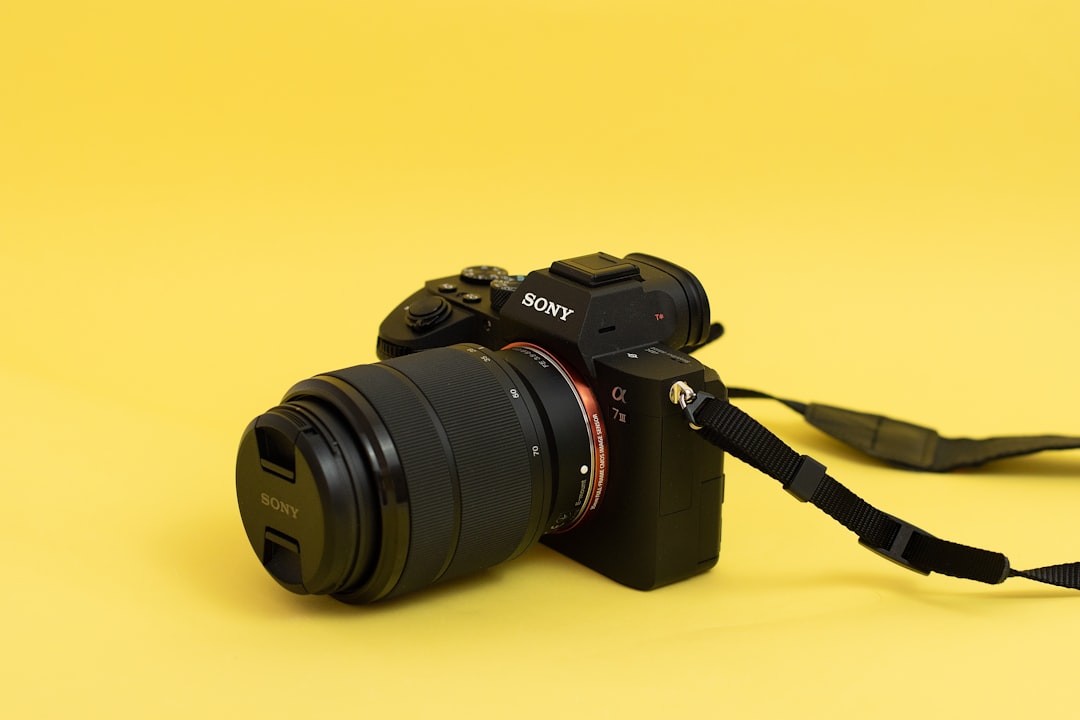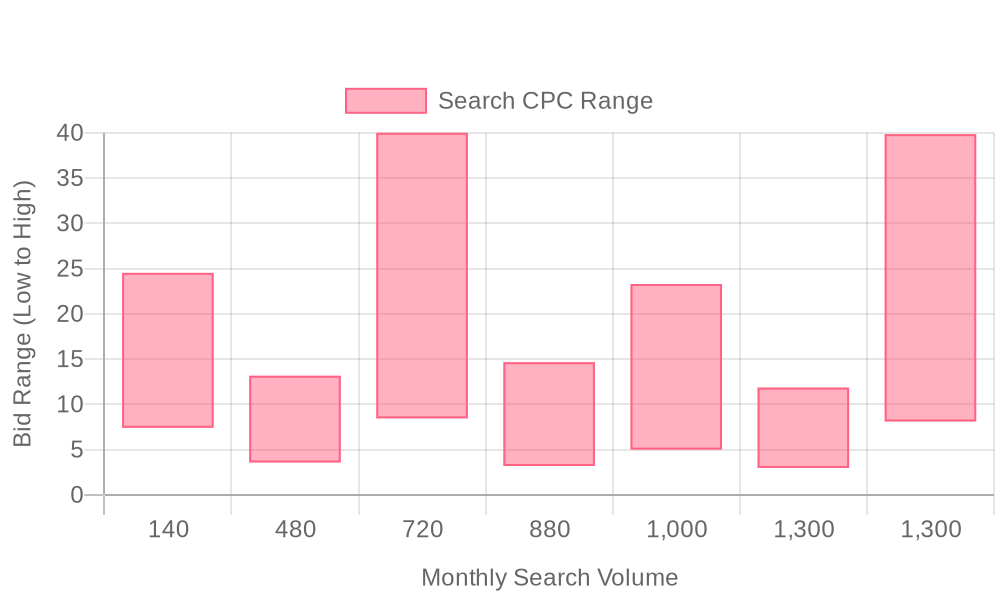
Supercharge your lead generation with a FREE Google Ads audit - no strings attached! See how you can generate more and higher quality leads
Get My Free Google Ads AuditFree consultation

No commitment
Supercharge your lead generation with a FREE LinkedIn Ads audit - no strings attached! See how you can generate more and higher quality leads
Get My Free Google Ads AuditFree consultation

No commitment
Supercharge your lead generation with a FREE Meta Ads audit - no strings attached! See how you can generate more and higher quality leads
Get My Free Google Ads AuditGet My Free LinkedIn Ads AuditGet My Free Meta Ads AuditFree consultation

No commitment
Supercharge your lead generation with a FREE Google Ads audit - no strings attached! See how you can generate more and higher quality leads
Get My Free Google Ads AuditFree consultation

No commitment
In the rapidly evolving landscape of digital advertising, using Google Ads for Mobile Advertising has become crucial. With the shift towards mobile devices, businesses face significant challenges such as tracking high-value prospects and ensuring seamless integration of intent signals across platforms. To tackle these issues, it becomes vital to capture audiences at their fingertips, across various apps and mobile platforms, while leveraging modern solutions that enhance data coherence and precision targeting. This comprehensive guide aims to address these challenges and is designed for modern professionals eager to leverage the full potential of Google Ads to drive powerful mobile advertising campaigns. We'll explore strategic use of Google Ads to engage mobile users effectively, overcome privacy concerns, and ensure compliance with regulations such as GDPR, all while maximizing engagement and conversions.

Modern mobile advertising demands precise targeting, actionable analytics, and seamless user experiences to capture high-value leads. B2B revenue teams can achieve stronger ROI and more efficient demand generation by deploying a framework that leverages Google Ads for mobile advertising and advanced data unification.
A successful mobile ad strategy prioritizes lead quality over volume, requiring a combination of sophisticated audience segmentation and real-time performance insights. Integrating enriched intent data and CRM systems into campaign workflows ensures that ad spend is directed toward accounts most likely to convert, optimizing every dollar invested.
Ready to see the impact of unified data and smarter targeting on your mobile campaigns? Get started for free with Sona.

Mobile advertising is a high-stakes channel where reaching the right user at the right moment drives exponential growth for brands. Precision targeting and real-time optimization are essential for marketers looking to connect their offers with high-intent mobile audiences, especially as user attention becomes more fragmented across apps and platforms. For further insights on mobile campaign effectiveness, explore our marketing blog.
Leveraging Google Ads for mobile advertising allows organizations to capture users while they are actively searching or engaging with relevant content on their mobile devices. Marketers benefit from actionable intent data and granular targeting settings, ensuring that campaigns reach users most likely to convert and reducing wasted ad spend on low-quality impressions. To maximize these benefits, dynamic intent signals can help prioritize engaged prospects in real time.


Mobile advertising remains one of the highest-growth sectors, driven by rapid changes in user behavior and a surge in app-first engagement. B2B marketers and revenue teams can maximize returns by focusing on segments with measurable intent, leveraging real-time audience data to prioritize accounts that consistently demonstrate readiness to buy.
Effective audience segmentation is the backbone of high-performing Google Ads for Mobile Advertising, enabling marketers to break away from generic messaging and connect with users at pivotal moments. With granular segmentation, B2B revenue teams create dynamic, relevant experiences across the mobile landscape, significantly increasing engagement rates while minimizing wasted spend.
Ready to put powerful segmentation into action? Get started for free with Sona.

| Industry | Keyword | Monthly Search Volume | Competition Level | Low Bid | High Bid |
| Mobile Advertising | mobile advertising companies | 140 | LOW | 7.41 | 24.53 |
| Mobile Advertising | mobile billboard advertising | 480 | LOW | 3.58 | 13.16 |
| Mobile Advertising | mobile app advertising | 720 | LOW | 8.46 | 40 |
| Mobile Advertising | mobile ads | 880 | LOW | 3.19 | 14.66 |
| Mobile Advertising | mobile advertising | 1000 | LOW | 5 | 23.3 |
| Mobile Advertising | mobile billboard | 1300 | LOW | 2.98 | 11.85 |
| Mobile Advertising | app advertising | 1300 | LOW | 8.11 | 39.85 |
Effective mobile advertising relies on a precise keyword approach that targets high-value prospects while minimizing wasted impressions. By focusing on intent-rich queries and leveraging exclusion tactics, marketing teams can direct spend toward users most likely to convert, streamlining both engagement and acquisition. Accessing precise audience intelligence enables teams to refine keyword targeting and maximize campaign ROI.
Ready to streamline your mobile advertising strategy? Get started for free with Sona.
Executing high-impact campaigns in Google Ads for Mobile Advertising requires a tightly-structured, data-driven approach that connects every touchpoint and channel. B2B revenue teams benefit from this framework by making each campaign more accountable, measurable, and responsive to real-time market shifts.
Grouping keywords by app category, audience demographics, and usage patterns is foundational to effective mobile ad strategies. Prioritizing long-tail, mobile-specific search queries ensures relevance for intent-rich audiences, helping teams reduce wasted spend and improve conversion rates. Integrating these keyword lists with CRM data can surface granular insights: marketers can align their Google Ads targeting with content and social media calendars, ensuring unified messaging and reducing gaps across the funnel. When advanced data platforms are in play, marketers move past anonymous web traffic to reveal exactly which companies and personas are engaging, allowing for precise keyword expansion and exclusions in real time.
Mobile user behavior and preferences should drive every word of ad copy. Effective ads highlight clear app benefits, core features, and unique incentives tailored to the mobile context, such as fast onboarding or exclusive in-app offers. Using Google Ads extensions—like price or promotion extensions—enables richer, more actionable messaging that resonates with users on smartphones and tablets. When campaign data is synchronized across sales, content, and customer success teams, ad messaging stays consistent at every touchpoint, strengthening brand trust and accelerating the path to download or engagement. Sophisticated platforms can automate this process by updating copy based on audience movement within the sales funnel, so each user segment receives the most relevant value proposition.
Mobile-first landing pages are essential for capturing and converting high-intent traffic. Fast load times and intuitive navigation keep bounce rates low, while mobile-optimized forms and clear calls to action streamline the user journey. Including mobile-specific incentives—like app store ratings, testimonials, or limited-time offers—provides the social proof and urgency needed to drive action. Advanced integrations connect every form and CTA directly to your CRM, so leads are instantly enriched and routed to the right workflows. This ensures data from Google Ads campaigns flows seamlessly into sales and marketing automation, enabling more targeted nurture and follow-up.
Optimization is ongoing, anchored by smart bidding strategies such as Target CPA and informed by constant A/B testing of mobile ad formats, creative, and CTAs. Importing offline conversions closes the attribution loop, giving a complete view of ROI and campaign effectiveness. By leveraging real-time intent and behavioral data, teams can make targeted adjustments—shifting budget to high-converting audiences, updating creative based on live performance, and automatically excluding low-value segments. When platforms unify ad, CRM, and web analytics, marketers access granular intent signals and conversion events, enabling more precise and profitable optimizations at scale.
Ready to launch smarter mobile ad campaigns? Get started for free with Sona.

Expanding your mobile advertising presence requires precise, data-driven tactics that align with how modern buyers engage on their devices. B2B revenue teams that integrate enriched data sources and adapt quickly to real-time opportunity signals drive superior outcomes in mobile environments. Discover additional strategies for demand generation in the Sona blog.
As we wrap up our exploration of Google Ads for mobile advertising, it's clear that leveraging this powerful tool can significantly enhance your ability to promote mobile applications effectively. By tailoring your ad strategies to suit mobile platforms, you can reach a wider audience and achieve better engagement.
Throughout this article, we've delved into the challenges of mobile advertising, discussed strategies for crafting compelling mobile ad campaigns, and highlighted the key features of Google Ads that cater specifically to mobile devices. From understanding mobile user behavior to optimizing ads for better performance, these insights equip you with the knowledge to navigate the mobile advertising landscape successfully.
Imagine the possibilities when you implement these strategies. With the right approach, you can transform your advertising efforts, maximize your app's visibility, and drive substantial growth. Embrace this opportunity to refine your marketing tactics and see tangible results.
To take your mobile advertising to the next level, start for free to experience our platform and its capabilities today. Discover how you can revolutionize your approach to mobile advertising and propel your business forward.
Yes, using Google Ads for mobile advertising is crucial as it allows businesses to capture audiences on mobile platforms with precision targeting and data-driven strategies.
To create effective mobile ads with Google Ads, prioritize precise targeting, use enriched intent data for audience segmentation, optimize landing pages for mobile, and continuously refine campaigns through real-time analytics.
The different types of mobile ads available include search campaigns, display network campaigns, video campaigns, app promotion campaigns, and remarketing campaigns.
You can target mobile users specifically by focusing on mobile-specific keywords, using real-time audience data, and employing predictive modeling to prioritize high-intent users.
Best practices for mobile app promotion using Google Ads include using a mix of creative formats, integrating CRM and product analytics, syncing enriched lead data, and employing dynamic audience updates to ensure relevance.
Join results-focused teams combining Sona Platform automation with advanced Google Ads strategies to scale lead generation

Connect your existing CRM

Free Account Enrichment

No setup fees
No commitment required

Free consultation

Get a custom Google Ads roadmap for your business
Join results-focused teams combining Sona Platform automation with advanced Meta Ads strategies to scale lead generation

Connect your existing CRM

Free Account Enrichment

No setup fees
No commitment required

Free consultation

Get a custom Google Ads roadmap for your business
Join results-focused teams combining Sona Platform automation with advanced LinkedIn Ads strategies to scale lead generation

Connect your existing CRM

Free Account Enrichment

No setup fees
No commitment required

Free consultation

Get a custom Google Ads roadmap for your business
Join results-focused teams using Sona Platform automation to activate unified sales and marketing data, maximize ROI on marketing investments, and drive measurable growth

Connect your existing CRM

Free Account Enrichment

No setup fees
No commitment required

Free consultation

Get a custom Google Ads roadmap for your business
Over 500+ auto detailing businesses trust our platform to grow their revenue
Join results-focused teams using Sona Platform automation to activate unified sales and marketing data, maximize ROI on marketing investments, and drive measurable growth

Connect your existing CRM

Free Account Enrichment

No setup fees
No commitment required

Free consultation

Get a custom Google Ads roadmap for your business
Over 500+ auto detailing businesses trust our platform to grow their revenue
Join results-focused teams using Sona Platform automation to activate unified sales and marketing data, maximize ROI on marketing investments, and drive measurable growth

Connect your existing CRM

Free Account Enrichment

No setup fees
No commitment required

Free consultation

Get a custom Google Ads roadmap for your business
Over 500+ auto detailing businesses trust our platform to grow their revenue
Our team of experts can implement your Google Ads campaigns, then show you how Sona helps you manage exceptional campaign performance and sales.
Schedule your FREE 15-minute strategy sessionOur team of experts can implement your Meta Ads campaigns, then show you how Sona helps you manage exceptional campaign performance and sales.
Schedule your FREE 15-minute strategy sessionOur team of experts can implement your LinkedIn Ads campaigns, then show you how Sona helps you manage exceptional campaign performance and sales.
Schedule your FREE 15-minute strategy sessionOur team of experts can help improve your demand generation strategy, and can show you how advanced attribution and data activation can help you realize more opportunities and improve sales performance.
Schedule your FREE 30-minute strategy sessionOur team of experts can help improve your demand generation strategy, and can show you how advanced attribution and data activation can help you realize more opportunities and improve sales performance.
Schedule your FREE 30-minute strategy sessionOur team of experts can help improve your demand generation strategy, and can show you how advanced attribution and data activation can help you realize more opportunities and improve sales performance.
Schedule your FREE 30-minute strategy sessionOur team of experts can help improve your demand generation strategy, and can show you how advanced attribution and data activation can help you realize more opportunities and improve sales performance.
Schedule your FREE 30-minute strategy session





Launch campaigns that generate qualified leads in 30 days or less.
